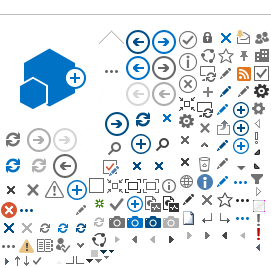To protect City assets, employees and the public, electronic video surveillance (also known as CCTV or closed circuit television) is used in City facilities, at Zum bus stops and on City buses. CCTV is used as part of a larger program that includes lighting, security patrols, and built environment design to promote public safety and security.
How does the System Work?
CCTV cameras record video images of City facilities and Zum Bus Stops 24 hours a day, 365 days a year. The video that is recorded is stored in digital format. Recorded video is used to investigate incidents and as evidence for prosecutions. Brampton’s Security Services staff can also monitor “live” images generated by CCTV cameras in City facilities and Zum bus stops, based on ever-changing operational requirements. However, not all cameras are monitored at all times.
CCTV cameras in City buses begin recording when a bus is started and operate for the entire time the bus is in service. Traditional buses have four cameras, which record the road in front of the bus, the front door, the rear door and the seating area. Articulated buses have an additional two cameras that record the middle door and rear seating area. The video that is recorded is stored in digital format. Recorded video is used to investigate complaints, accidents and injuries. Staff are not able to monitor “live” images generated by CCTV cameras in City buses.
Privacy Protection
The City recognizes the need to balance an individual’s right to privacy and the need to ensure safety and security in the community. It has designed its video surveillance program to ensure the benefits of video surveillance outweigh the loss of personal privacy. It does this by employing a number of strategies:
- Where feasible, less invasive means such as lighting and increased security patrols are employed in place of CCTV.
- CCTV cameras are positioned and screened to ensure that only “mission critical” views are recorded. Images of adjacent spaces and buildings are not recorded.
- CCTV cameras are limited to spaces where individuals typically have a lower expectation of privacy, such as on a bus or in a City office. CCTV cameras are not installed in spaces where individuals would have a greater expectation of privacy such as washrooms, change rooms and swimming pools.
- Operating procedures are in place to ensure that CCTV operators don’t zoom or pan the recorded view to “follow” a particular individual unless there is a clear operational requirement.
- The retention period for recorded video is strictly limited and destruction of the video records at the end of the retention period is automated.
- The program is subject to random compliance audits.
Retention
The video recordings from City facilities and Zum bus stops are retained for 31 days. The video recordings from City buses are retained for 72 hours. In the event of an incident or concern, video can be preserved for investigation and prosecution purposes. If video is not preserved, it is automatically and permanently destroyed at the end of the retention period. If you have been involved in an incident and would like to have video preserved, please contact
securityservices@brampton.ca with details.
Can I Access a CCTV Recording?
CCTV recordings may be disclosed through the Routine Disclosure Requests process. The City of Brampton has outlined procedures with respect to providing routine access to CCTV Records, while protecting personal information as required under MFIPPA.
Routine Disclosure applies to CCTV audio and/or video data captured by CCTV cameras that are operated by the City of Brampton, or one of its vendors.
Exclusions: None
Before filing a request, you should know the following:
- When making your request, you must be as specific as possible in describing the video records you are seeking. At a minimum, please provide the time, date and location where the video was recorded. The more details you are able to provide, the more likely that the video you are seeking can be located.
- The City must balance your right to access City records, with the privacy rights of affected individuals. In practical terms, this means that license plate numbers and the faces of identifiable individuals will be obscured (blurred or pixelated) prior to disclosure of the video records.
- Fees are applied based on the length of footage requested. You may limit fees by limiting the timeframe of the video you request, and specifically for bus video, you may also limit fees by limiting the number of camera angles you request.
Disclosure to Law Enforcement
The City discloses video records to law enforcement agencies in Canada upon request, providing the records are used for the purposes of an active law enforcement investigation.
Legal Authority
Personal information collected through the recording of surveillance video is collected under the authority of the Municipal Act and the Occupier's Liability Act.
Questions or Concerns?
Questions specifically related to CCTV recordings and video retention should be directed to the Manager of Security Services at 905-874-2111 or at
securityservices@brampton.ca.
For general questions about privacy protection, or to make a privacy complaint, contact
privacy@brampton.ca.
Drone Cameras
The City’s Fire and Emergency Services use drone cameras for the purposes of firefighting and providing paramedical support to large public events. Questions about drone cameras may be directed to the Division Chief, Fire Training at 905-874-2700.
Body-Worn Cameras
The City does not, at present, use body-worn cameras.
Automatic License Plate Readers (ALPR)
The City uses automatic license plate readers for parking enforcement.
You may access details on the program here. Questions about automatic license plate readers may be directed to
enforcement@brampton.ca.
Video Analytics
Video analytics include tactics such as facial recognition, automated crowd counting, automated object recognition and automated object tracking. The City currently does not employ video analytics.
